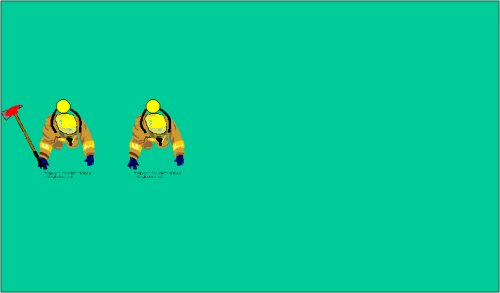Simple Search Techniques
![]()
An often trained skill that we could certainly use but often fail to train upon it. We all have conducted some search training using black out face pieces and sending in teams of two to search a designated area.
But how often do we make this a larger than normal area and how well do two members coordinate their efforts under air, and using black out face masks.
I am sure that many of you have conducted drill very similar to what we are saying and proposing this week, but I ask the question...."When was the last time?"
"How frequently have you done it this calendar year as we enter the 9 month?"
Let's take a look at what we are trying to achieve here.
* Get members under SCBA breathing air for an additional training period. This adds to their overall training experience.
* Get members to work as a team under blackout conditions.
* Get members to utilize their tool for extended reach and other purposes.
* Take a look at our existing search training and modify if and when we need it.
* Stress the safety and survival points of maintaining contact with a point of orientation such as a wall.
How do we do it?
* Get a larger open area, an apparatus bay would be just fine.
* Have all students perform a weekly inspection on the SCBA being used for the drill.
* Insure that all members are physically OK and hydrated.
(Use of SCBA is not for all members who may not be up to rigors and physical exertion. Make sure your members using SCBA have been medically cleared as approved by your department's current policy. In addition each member may want to drink 8 oz. of water prior to and after each bottle. After each evolution is complete, rehab the members and monitor physical conditions)
* Place a hose dummy or simulated victim approximately 12-14 feet off of one wall. Always place the victim in the same place and this drill becomes measurable for everyone.
* Place the victim as deep (length) into the area as possible so that there is some time before students will reach it. Different students use different levels of air consumption, but 20 - 25 feet in depth might be all you can acheive.
* Each student should have a hand tool. One should be an axe.
* Have students in teams of two proceed into the area using the designated wall as a guide.
* Students should use the tool to maintain contact with the wall if they have to venture farther out to retrieve the victim.
* Drill can conclude with complete removal or can be stopped sooner as soon as they get the victim, work as a team and are oriented and heading for the exit while still maintaining contact with the wall.
* You can either coach them along and teach them as they go, or allow them to do it once incorrectly, take them out and then have them do that a second time if time permits the right way. There are many schools of thought on this but that is a discussion for another time!
* During the drill observe whether there is good communications, good use of hand tools, ( or have the tools become anchors?) and whether or not they are covering the search area evenly and appropriately as well as any signs of distress or other safety concerns.

Yeah, Yeah, I know the second guy doesn't have a tool in his hand in the diagram....
I think you get the idea anyway!